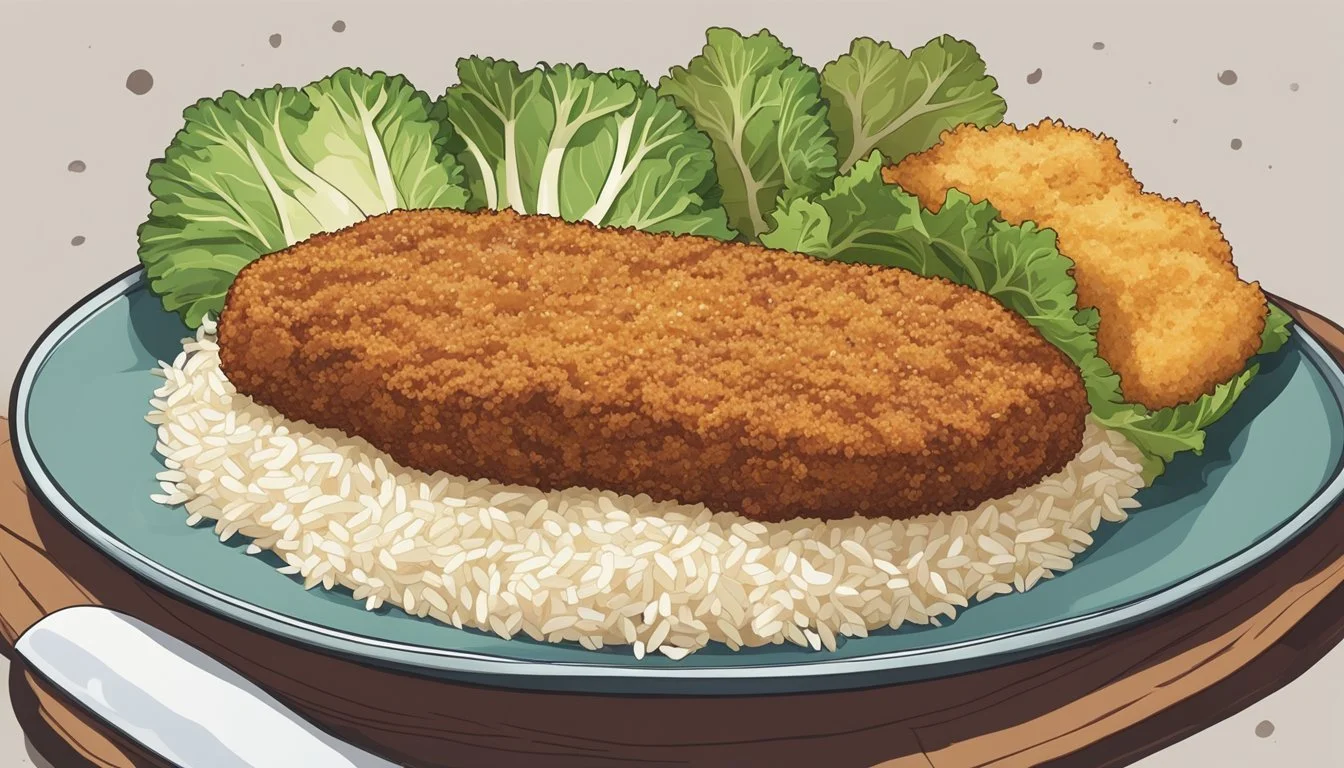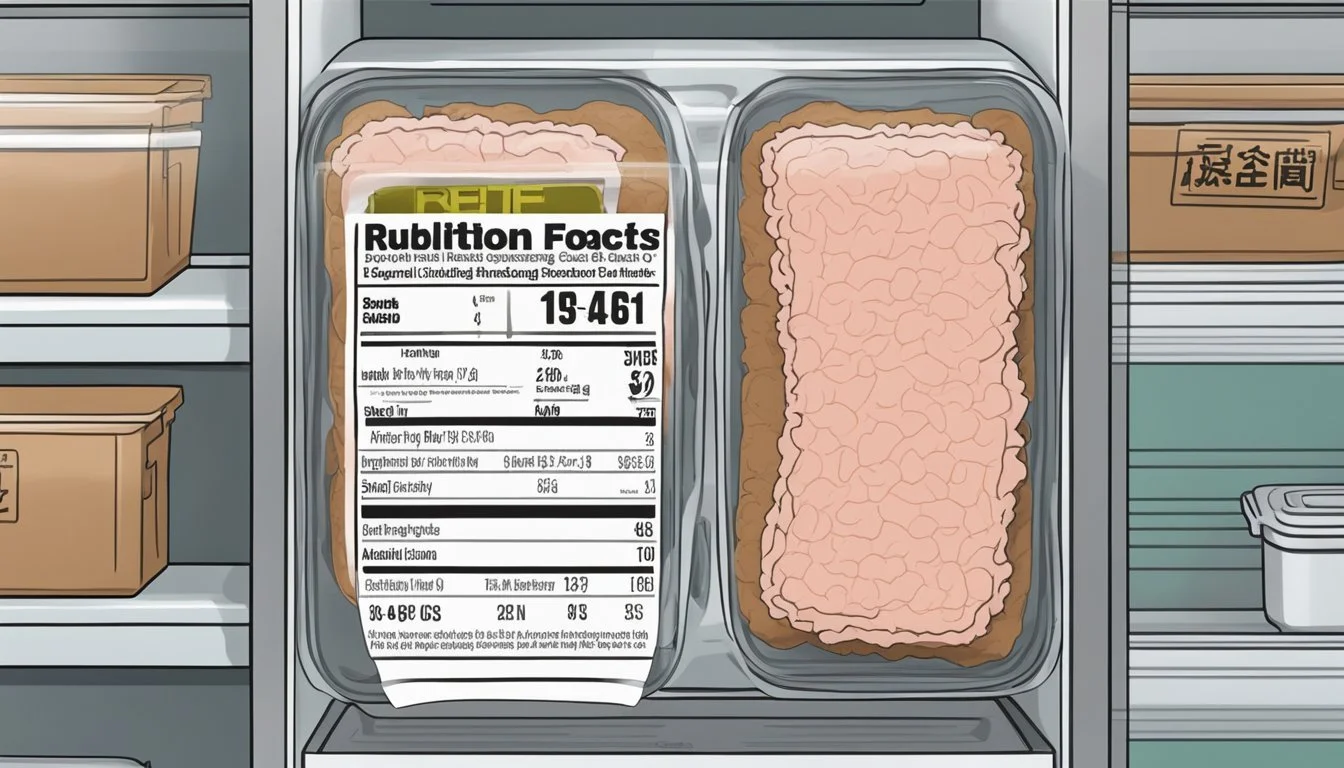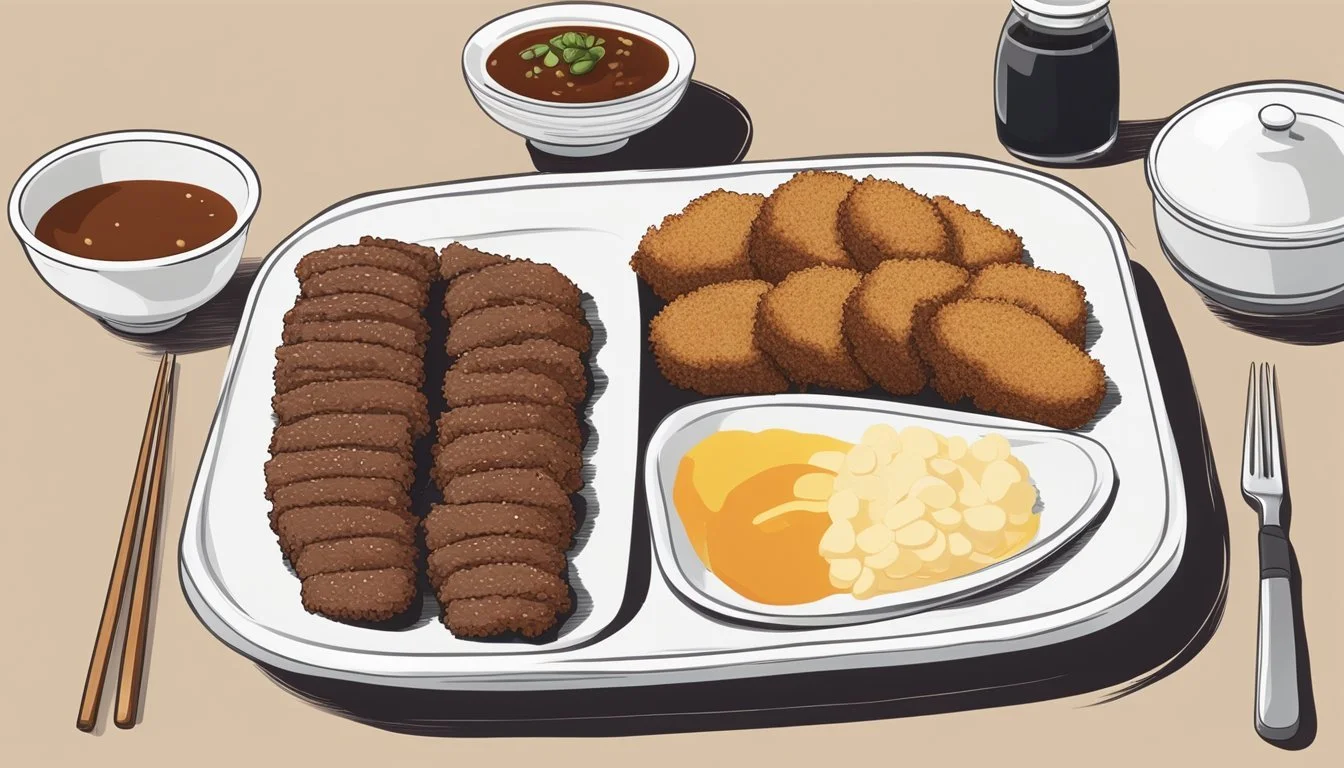How Long Does Beef Katsu Last?
Your Comprehensive Storage Guide
Beef Katsu, a beloved dish in Japanese cuisine, captivates many with its crispy breaded exterior and tender, juicy interior. Often served with a side of demi-glace sauce, this deep-fried delight pairs perfectly with shredded cabbage and a bowl of rice. Whether homemade or store-bought, knowing how long beef katsu lasts is essential for enjoying it safely and maintaining its deliciousness.
For those looking to maximize their culinary experience, it's crucial to store beef katsu properly. When refrigerated, beef katsu can last up to 3-4 days without compromising its quality. If you need to keep it longer, freezing is a viable option. Properly wrapped in plastic and placed in an airtight container, frozen beef katsu can last for about 1-2 months. Reheating it should be done carefully to retain the crispy texture.
Understanding the shelf life and storage practices helps ensure that this delightful Japanese treat remains a staple in your meal rotation, always tasting as good as the day it was made. Enjoy the rich flavors and textures of beef katsu while maintaining food safety and quality in your kitchen.
Understanding Beef Katsu
Beef Katsu is a Japanese-style breaded and fried beef cutlet, known for its crispy exterior and juicy interior. This dish involves specific ingredients and preparation techniques, various sauce options to complement the flavors, and a distinct nutritional profile.
Ingredients and Preparation
The core components of Beef Katsu include beef, flour, egg, and panko breadcrumbs. Beef is typically cut into thin fillets, then seasoned with salt and pepper.
The fillets are first coated in flour, dipped into beaten egg, and then covered in panko breadcrumbs. Heating oil to the right temperature is crucial for achieving the perfect crispy texture. Double frying, as noted by some chefs, enhances the crunchiness and ensures the meat remains tender inside.
Katsu Sauce Varieties
Katsu sauce plays a significant role in elevating the dish's flavor. This sauce can vary but generally includes a mix of fruits, vegetables, spices, and soy sauce, resulting in a tangy and slightly sweet taste.
Common varieties might feature ingredients like soy sauce, ketchup, Worcestershire sauce, and sometimes additional spices for complexity. Some recipes incorporate red wine and tomato paste to add richness. Each variation enhances the savory profile of the beef katsu differently.
Nutritional Profile
Understanding the nutritional profile of Beef Katsu helps in planning balanced meals. Beef Katsu provides a good source of protein, primarily from the beef and egg used in the preparation.
However, being a fried dish, it also contains significant amounts of fat, particularly from the frying oil. The breading, involving flour, egg, and panko, contributes to the carbohydrate content. This combination makes it a calorie-dense dish, yet it's also rich in essential nutrients and vitamins, influenced by the sauce ingredients and preparation techniques.
Cooking Techniques
Precision in the cooking process ensures that beef katsu achieves its characteristic crispiness and exceptional flavor. Key factors include the coating method and maintaining the correct oil temperature during frying.
Achieving the Perfect Crispiness
To achieve the perfect crispiness for beef katsu, the coating process is crucial. Start by cutting the steak to the desired thickness and seasoning it with salt and pepper.
Prepare three bowls with simple ingredients: flour, beaten eggs, and panko bread crumbs. Dip each steak fillet first in the flour, then the egg mixture, and finally coat it with panko.
Panko bread crumbs provide a light and airy texture, crucial for that crispy exterior. Ensuring an even coating will result in a consistent, golden-brown color when fried.
Oil Temperature and Frying
Maintaining the correct oil temperature is essential for deep-frying beef katsu. Heat the oil to 180°C (356°F), as this temperature is optimal for achieving a crispy coating without burning the outer layer.
Use a thermometer to monitor the temperature, adjusting the heat as needed. Fry the breaded fillets in small batches to prevent the oil temperature from dropping too much, which can result in soggy katsu.
The beef katsu should be fried until the coating is golden brown and crispy, typically around 3-4 minutes on each side. Avoid overcrowding the pan to ensure even cooking and a perfect crispy texture.
Serving Suggestions
When serving beef katsu, it's essential to consider both the accompaniments and the presentation to enhance the dining experience. Pairing it with the right sides and arranging it attractively can elevate the dish.
Accompaniments
Beef katsu pairs excellently with a variety of sides. Steamed white rice is a classic choice, providing a simple yet effective base to highlight the flavors. Miso soup can add a comforting touch, while a crisp cabbage salad with a tangy sesame dressing provides a refreshing contrast.
Pickled vegetables such as Japanese pickles (tsukemono) offer a tangy bite that complements the fried beef. Katsu sauce or tonkatsu sauce can be served for dipping, adding a rich and savory element. Gyukatsu is often served with side dishes like potato salad or even edamame to maintain authenticity.
Plating and Presentation
For an appealing presentation, slice the beef katsu into bite-sized pieces before serving. Arrange the slices on a plate in a fan or row for a neat look. Place the accompaniments like steamed rice and cabbage salad alongside the katsu.
Use small bowls or dishes for sauces and dips. Pour just enough katsu sauce or tonkatsu sauce into a small dish to avoid cluttering the plate. Adding a wedge of lemon can provide a fresh touch and a burst of color.
Serve with chopsticks for a traditional experience, and if desired, garnish with sesame seeds or scallions to enhance visual appeal. Putting thought into the arrangement can make a simple meal feel special and well-considered.
Storage Guidelines
Beef katsu, a breaded and deep-fried steak, has specific storage requirements to maintain its quality and safety. Below are detailed practices for refrigeration and freezing methods to help prolong its shelf life.
Refrigeration Practices
Proper refrigeration is crucial to maintaining the freshness of beef katsu. It should be stored in an airtight container or wrapped securely in plastic wrap or aluminum foil to prevent exposure to air. The refrigerator should be set at 40°F (4.4°C).
Beef katsu should be consumed within 3 to 5 days of refrigeration. For best results, place it on a shelf rather than the refrigerator door, as the constant opening and closing can cause temperature fluctuations, potentially leading to spoilage.
Freezing and Thawing Methods
To preserve beef katsu for a more extended period, freezing is an effective method. Wrap the katsu tightly in plastic wrap, followed by aluminum foil, or use vacuum-sealed bags to minimize freezer burn. Store at 0°F (-17.8°C) or lower.
Frozen beef katsu can last up to 3 months. Proper thawing is essential for quality. It should be thawed in the refrigerator and not left at room temperature to avoid bacterial growth. Use within 1 to 2 days after thawing to ensure safety and quality.
Shelf Life Determinants
The shelf life of beef katsu depends on several factors. Proper storage methods play a crucial role in preserving its quality and safety.
Storage Temperature:
Refrigeration is essential. Beef katsu should be stored at or below 40°F (4.4°C). When stored properly, it can last 3 to 5 days in the refrigerator. Room temperature storage should be avoided to prevent bacterial growth.
Packaging:
Airtight containers or vacuum-sealed bags help extend shelf life. They prevent exposure to air, which can cause the meat to spoil faster.
Freshness of Ingredients:
Using fresh beef is key. The initial quality of the beef directly impacts how long the katsu can last. Freshly prepared katsu will naturally last longer than using beef near its expiration date.
Preparation and Handling:
Proper cooking and handling techniques are crucial. Ensuring that the beef katsu is cooked to the right internal temperature can reduce the risk of spoilage and contamination.
Expiration Date:
Always check the expiration date of the beef used. Even if cooked, using beef that is near or past its expiration can reduce the potential shelf life of the katsu.
Leftover Management:
Promptly refrigerate any leftovers. If not consumed within the recommended period, consider freezing. Properly frozen beef katsu can last for several months.
Storage Conditions:
Humidity and exposure to light can also affect shelf life. Store beef katsu in a cool, dark place within the refrigerator to maintain its quality.
By understanding and controlling these factors, the shelf life of beef katsu can be maximized, ensuring it remains safe and enjoyable to eat.
Safety and Spoilage Signs
When storing beef katsu, ensuring its safety involves recognizing spoilage signs.
Spoilage Signs:
Odor: A sour or ammonia-like smell indicates spoilage.
Appearance: Discoloration, such as browning or greenish hues, suggests the beef katsu is no longer safe.
Texture: Slimy or sticky texture is a tell-tale sign of spoilage.
Recognizing Bad Katsu:
Signs Interpretation Sour smell Spoiled beef Greenish or brown color Spoilage Slimy texture Unsafe to consume
Storage Tips:
Refrigeration is key. Store beef katsu below 40°F (4°C) to prevent bacterial growth.
Use airtight containers to maintain freshness.
Consume within 1-2 days if refrigerated, to ensure safety.
Proper storage and regular checks for spoilage signs can keep your beef katsu safe to eat. If anything seems off, it's best to discard the katsu to avoid the risk of foodborne illness.
Reheating Best Practices
To achieve the best flavors and texture when reheating beef katsu, it's essential to follow specific steps. Preheating the oven to 375°F (190°C) ensures the katsu warms evenly.
Place the cold katsu on a baking sheet lined with parchment paper. Cover it loosely with aluminum foil to retain moisture and prevent excessive browning. Bake for 10-15 minutes until heated through.
For added crispiness, remove the foil for the final few minutes. This step is crucial to bring back the desired crunchiness.
Alternatively, a toaster oven can be used. Set it at the same temperature and follow similar steps. This method is ideal for smaller portions.
Microwave reheating is quicker but may not maintain the katsu's crisp texture. Place it on a microwave-safe plate and cover with a damp paper towel. Heat in 30-second intervals until warmed.
Avoid reheating in a nonstick skillet with too much oil as it could make the katsu overly greasy. Instead, use a small amount of oil over medium heat for a brief period to retain its crunchy exterior.
Air fryers can also be effective. Set the air fryer to 350°F (175°C) and cook the katsu for 5-7 minutes. Flip halfway through to ensure even heating.
Reheating times can vary based on the katsu's size and thickness. Always check for even heating to guarantee the best results.
Sauce and Condiments
Beef katsu is enjoyed with various sauces that enhance its flavor. These sauces range from homemade creations to store-bought options and typically feature key ingredients like Worcestershire sauce, soy sauce, and ketchup.
Homemade vs. Store-Bought Sauces
Homemade sauces for beef katsu provide customization and freshness. A basic homemade katsu sauce often includes ketchup, Worcestershire sauce, soy sauce, and sugar mixed to taste. The freshness of the ingredients can add a vibrant flavor that pairs well with the crispy beef.
Store-bought sauces, like tonkatsu sauce, offer convenience. Brands often balance the mix of sweet, salty, and umami flavors. These sauces usually have preservatives, which extends their shelf life. Once opened, it is important to refrigerate these sauces to keep them fresh.
Common Ingredient Profiles
Katsu sauce and tonkatsu sauce feature similar ingredient profiles. Typical components include ketchup for sweetness and tanginess, Worcestershire sauce for a complex umami flavor, soy sauce for saltiness, and sugar for balance.
Some recipes might also include a touch of garlic powder or onion powder for extra depth. These ingredients combine to create a rich and flavorful sauce that complements the fried beef. Whether homemade or store-bought, the optimal combination of these elements greatly enhances the dish.
Cultural Significance
Beef katsu plays a significant role in Japanese cuisine and its variations reflect the rich culinary traditions across different regions of Japan.
Beef Katsu in Japanese Cuisine
Beef katsu is a deep-fried beef cutlet that has become a staple in Japanese cuisine, often found alongside pork katsu and chicken katsu. This dish features tender beef, coated with panko breadcrumbs and fried to perfection. Originating in Tokyo, it is a modern adaptation of the Western-style cutlet, combined with traditional Japanese frying techniques.
Beef katsu is often enjoyed with a special sauce made of soy sauce, red wine, and other seasonings. It is typically served with shredded cabbage, rice, and sometimes a bowl of miso soup. Unlike tempura, which uses a light batter, katsu's panko coating gives it a unique crunch and texture.
Regional Variations
In Kansai region, beef katsu is often prepared with a slight variation in seasoning and breading techniques. This area prefers a thicker cut of beef, highlighting the quality and flavor of the meat. Traditionally, Wagyu beef is used, which adds a rich and luxurious taste to the dish.
Another regional variant is found in Tokyo, where the focus is on achieving a crispy exterior and a juicy interior. Here, the dish is sometimes accompanied by different sauces, including tonkatsu sauce, which is sweeter and thicker. These subtle differences in preparation methods and ingredients showcase the regional diversity within Japanese cuisine, making beef katsu a versatile and beloved dish across the country.
Health and Nutrition
Beef katsu offers a flavorful and nutritious dish, with its ingredients contributing to various dietary needs.
Nutrition
A standard serving of beef katsu provides a balanced mix of protein, fats, and carbohydrates.
Nutritional Breakdown:
Calories: Approximately 350-400 per serving
Protein: Around 25-30 grams
Fat: 15-20 grams
Carbohydrates: 30-35 grams
Fat Content
The fat content in beef katsu comes from both the meat and the frying process. Using leaner cuts of beef can reduce the total fat content.
Protein
Rich in protein, beef katsu helps in muscle building and repair. The protein content is further enhanced if a combination of ground beef and pork is used.
Vitamins and Minerals
Beef katsu contains essential minerals such as iron, zinc, and potassium.
Sodium
Soy sauce and other seasonings may elevate the sodium levels, so it's advisable to monitor salt intake if necessary.
Dietary Fiber
Using panko breadcrumbs adds a slight amount of dietary fiber, which can aid in digestion. Integrating whole wheat panko can increase fiber content.
Eating beef katsu in moderation can be part of a balanced diet, contributing valuable nutrients while being mindful of its fried nature.












